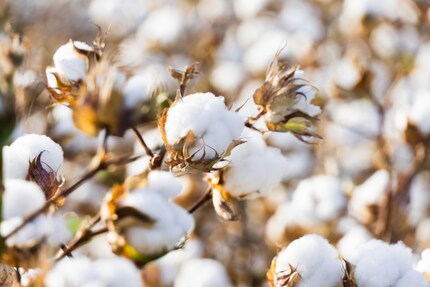
Background information
Why Vaseline is better than you think it is
by Mareike Steger

Laboratory tests show: Menstrual products contain harmful substances that don't belong in them. Find out what's in the products and how harmful tampons really are here.
A menstruating woman uses a total of 7400 tampons in her lifetime, assuming that she uses four tampons four days a month between the ages of 12 and 51. That is quite a considerable amount. Especially when the associated health risks are taken into account.
How high the exact amount of heavy metals in the tampons is, however, could not be clarified in the study due to the small number of samples. The study also did not investigate the direct health consequences of exposure to the pollutants or the extent to which they could have long-term effects on the body.
No harmful substances were detected in five of the eight products tested. The ProComfort Normal tampons from the brand o.b. took first place with a score of «very good», as they had the best absorbency and contained no plasticisers.
Only in the organic cotton tampons from Natracare
the laboratory found traces of Ampa, the degradation product of the controversial glyphosate. This put the product in last place in the test. According to the manufacturer, the weedkiller could either be a by-product of the bleaching process of the bio-tampons or come from the tap water.
Summarised: In principle, the BfG considers tampons to be unproblematic - the quantity of problematic ingredients is too small to cause any harm to health. It is much more important that tampon wearers keep an eye on toxic shock syndrome.
However, all research institutes emphasise the importance of informing buyers about the substances and ingredients in the products because, according to K-Tipp, there is still no mandatory declaration for tampons. Nevertheless, some manufacturers have responded to K-Tipp's enquiry and have declared that they are taking measures to improve their products.
An alternative to period products is not to use any at all. Maike Schuldt-Jensen shows how to do this in her article on free menstruation.
And you can read why menstruation isn't just cramps and mood swings in Natalie Hemengül's article.
Painting the walls just before handing over the flat? Making your own kimchi? Soldering a broken raclette oven? There's nothing you can't do yourself. Well, perhaps sometimes, but I'll definitely give it a try.
Interesting facts about products, behind-the-scenes looks at manufacturers and deep-dives on interesting people.
Show allThere is indeed justifiable cause for concern, as various studies have already been able to detect harmful substances such as plasticisers, carcinogenic PAHs and heavy metals in the products. The problem: in contrast to orally ingested substances, harmful substances absorbed via the vaginal mucosa do not pass through the liver or kidneys and thus enter the body unfiltered, where they may cause damage.
In a study published in 2024, a research team in the USA analysed 14 different brands of tampons for 16 harmful metals. The team found them in all products, whether organic or conventional. These included worrying substances such as argon, cobalt and even lead. However, it remains unclear how these heavy metals got into the products. It is possible that they are absorbed by the plants during the cultivation of cotton, a main component of many tampons, and thus end up in the material.

According to the German Federal Institute for Risk Assessment (BfG), there is no cause for concern because, despite the small number of samples, the levels of heavy metals in the products are so low that no health risks to the body are to be expected. In comparison, the heavy metal content in food, drinking water or house dust is higher. The pollutants detected in tampons are therefore negligible.
A study by Singh et al. also investigated the metal concentration in the blood of tampon users and the associated cell-damaging oxygen stress. Although this showed a possible increase in mercury levels, the research group was unable to identify a statistically significant correlation compared to the control group without tampon use.
Nevertheless, both research teams came to the conclusion that the detection of heavy metals in tampons
is a significant finding - one that should be communicated more clearly to consumers and requires further research into risk assessment. The BfG also holds manufacturers accountable and points out that the ALARA principle applies to heavy metals such as lead.
In addition to glyphosate, other substances of concern that have been repeatedly detected in menstrual products are so-called plasticisers. These are used in tampons to make the plastics more flexible and longer-lasting. However, these substances are repeatedly criticised: they disrupt the hormone balance in the body and can even trigger secondary diseases such as tumours or diabetes.
In March, K-Tipp examined eight different tampon brands in its product test. In addition to properties such as absorbency or the stability of the retraction band, the online magazine commissioned two specialised laboratories to test the products for plasticisers and Ampa, the degradation product of the controversial herbicide glyphosate.
The tampons from Tampax were also free from plasticisers, but due to their poor absorbency they came in second to last place with a score of «sufficient». In two other products, the laboratory tests found plasticiser DEHP. The K-Tipp mentions that this type of plasticiser is banned in Switzerland and the EU in products such as baby products, toys and cosmetics, but that this ban does not apply to tampons.
The online magazine did not investigate the impact of the substances on physical health. The BfG does not provide any information on the plasticisers, but the institute estimates the amount of glyphosate residues to be harmless. Nevertheless, the K-Tipp refers to the warnings from health organisations. As a reminder: they rate glyphosate as «possibly carcinogenic» and emphasise that plasticisers are associated with changes in the hormone system.